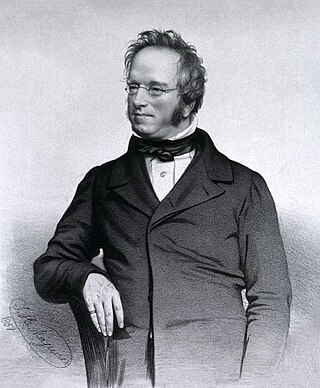Related Research Articles

Celestus is a genus of diploglossid lizards mostly endemic to Jamaica and containing about 11 species, though three of these may be extinct. They are commonly known as galliwasps although the origin of this name is unclear. Formerly, this genus had more than 31 species, but a 2021 phylogenetic study found this classification to be paraphyletic and split those species into their own genera. A more recent study found that several ecomorphs exist on Jamaica including a swamp ecomorph, a tree ecomorph, and a ground ecomorph.

John Edward Gray was a British zoologist. He was the elder brother of zoologist George Robert Gray and son of the pharmacologist and botanist Samuel Frederick Gray (1766–1828). The standard author abbreviation J.E.Gray is used to indicate this person as the author when citing a botanical name. The same is used for a zoological name.
Edward Harrison Taylor was an American herpetologist from Missouri.

George Albert Boulenger was a Belgian-British zoologist who described and gave scientific names to over 2,000 new animal species, chiefly fish, reptiles, and amphibians. Boulenger was also an active botanist during the last 30 years of his life, especially in the study of roses.

Albert Karl Ludwig Gotthilf Günther, also Albert Charles Lewis Gotthilf Günther, was a German-born British zoologist, ichthyologist, and herpetologist. Günther is ranked the second-most productive reptile taxonomist with more than 340 reptile species described.

Axel Johann Einar Lönnberg was a Swedish zoologist and conservationist. Lönnberg was born in Stockholm. He was head of the Vertebrate Department of the Naturhistoriska Riksmuseet from 1904 to 1933.

The rhinoceros iguana is an endangered species of iguana that is endemic to the Caribbean island of Hispaniola and its surrounding islands. A large lizard, they vary in length from 60 to 136 centimetres, and skin colours range from a steely grey to a dark green and even brown. Their name derives from the bony-plated pseudo-horn or outgrowth which resembles the horn of a rhinoceros on the iguana's snout. It is known to coexist with the Ricord's iguana ; the two species are the only taxa of rock iguana to do so.

Caribicus warreni, commonly known as the Haitian giant galliwasp or the Hispaniolan giant galliwasp, is a species of lizard in the family Diploglossidae. The species is endemic to the island of Hispaniola.

Diploglossidae is a family of anguimorph lizards native to the Americas, with most genera being endemic to Hispaniola. Most members of this family are known as galliwasps. They were formerly considered a subfamily of Anguidae, but genetic evidence has shown them to be less closely related to other members of Anguidae than Anniellidae is.

Aristelliger lar, also known as the Hispaniolan giant gecko and the spotted Caribbean gecko, is a species of lizard in the family Sphaerodactylidae. The species is endemic to the island of Hispaniola.
William Roy "Bill" Branch was a British-South-African herpetologist.

Panolopus costatus, the Hispaniolan smooth galliwasp or common Hispaniolan galliwasp, is a species of lizard of the Diploglossidae family. It is endemic to the Caribbean island of Hispaniola.
Panolopus curtissi, also known commonly as Curtiss' galliwasp, Curtis's galliwasp, and the Hispaniolan khaki galliwasp, is a species of lizard in the family Diploglossidae endemic to the island of Hispaniola and surrounding islets.
Caribicus darlingtoni, also known commonly as Darlington's galliwasp and the Hispaniolan striped galliwasp, is a species of lizard in the family Diploglossidae. The species is endemic to the Dominican Republic on the Caribbean island of Hispaniola.
Wetmorena haetiana, the Hispaniolan earless galliwasp or earless galliwasp, is an endangered species of lizard of the Diploglossidae family endemic to the Caribbean island of Hispaniola.

Sauresia sepsoides, the Hispaniolan four-toed galliwasp or common four-toed galliwasp, is a species of lizard of the Diploglossidae family endemic to the Caribbean island of Hispaniola. It is the only member of the genus Sauresia.

Comptus stenurus, the Hispaniolan keeled galliwasp or Cope's galliwasp, is a species of lizard of the Diploglossidae family endemic to the Caribbean island of Hispaniola.

Caribicus is a genus of diploglossid lizards endemic to the island of Hispaniola in the Caribbean, in both the Dominican Republic and Haiti.

Panolopus is a genus of diploglossid lizards endemic to the island of Hispaniola in the Caribbean, in both the Dominican Republic and Haiti.
Wetmorena is a genus of diploglossid lizards endemic to the island of Hispaniola in the Caribbean, occurring in both the Dominican Republic and Haiti.
References
- 1 2 3 4 5 6 7 8 9 Evenhuis, Neal L. (2010). "Historical Dipterology: Anthony Curtiss (1910–1981): a riddle wrapped in a mystery inside an enigma" (PDF). Fly Times (44): 13–16.
- 1 2 Ng, Peter K.L.; Eldridge, Lucius G.; Evenhuis, Neal L. (2011). "The names of decapod and stomatopod Crustacea from Tahiti, French Polynesia, established by Anthony Curtiss in 1938 and 1944" (PDF). Zootaxa. 3099: 43–56.
- ↑ Piket, Vincent (1991). Louis Auchincloss: The Growth of a Novelist. Palgrave Macmillan. pp. 15–6. ISBN 9781349213689 . Retrieved July 4, 2017.
- ↑ "Obituaries: Franklin Curtiss". iberkshires.com. 28 September 2002. Retrieved 12 November 2020.
- ↑ "Augustus John (1878-1961) Portrait of Ethel Quinn Curtiss". Richard Taylor Fine Art. Retrieved 12 November 2020.
- ↑ Low, M.E.Y.; Tan, S.K. (2014). "On the identities of the molluscan names described in A Short Zoology of Tahiti in the Society Islands by Anthony Curtiss in 1938 (Mollusca: Cephalopoda, Gastropoda)". Zootaxa. 3764 (3): 394–400. doi:10.11646/zootaxa.3764.3.9.
- ↑ Beolens, Bo; Watkins, Michael; Grayson, Michael (2011). The Eponym Dictionary of Reptiles. Baltimore: Johns Hopkins University Press. xiii + 296 pp. ISBN 978-1-4214-0135-5. ("Curtiss", p. 63).
- ↑ "Panolopus curtissi". The Reptile Database. Retrieved 2022-08-02.